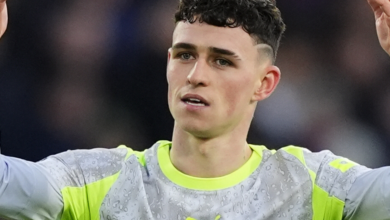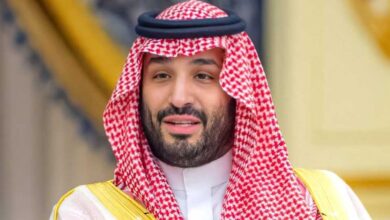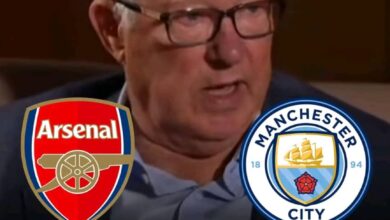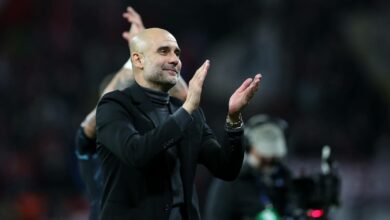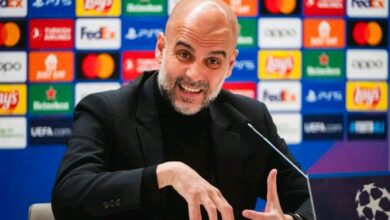How Jack Grealish really feels about a move away from Manchester City with Newcastle circling

Jack Grealish’s future at Manchester City has become one of the most intriguing storylines in the current transfer window, with the England international finding himself at a career crossroads that could define the next chapter of his professional journey. The 29-year-old attacking midfielder, who made headlines as the most expensive British player in history when he joined City for £100 million in 2021, now faces an uncertain future at the Etihad Stadium as Pep Guardiola’s side actively explore options to move him on this summer.
The situation represents a dramatic shift from the optimism that surrounded Grealish’s arrival in Manchester four years ago, when he was heralded as the missing piece in City’s pursuit of European glory. His journey from Aston Villa captain to potential Manchester City departure epitomizes the unpredictable nature of modern football, where even record-breaking transfers can fail to meet expectations.
The Aston Villa Golden Years
To understand the magnitude of Grealish’s current predicament, it’s essential to revisit his extraordinary rise at Aston Villa, the club where he developed from a promising academy graduate into one of England’s most exciting attacking talents. Grealish’s emergence as Villa’s talisman was nothing short of remarkable, with the Birmingham-born player embodying everything the club stood for during their most challenging period in recent history.
When Aston Villa found themselves relegated to the Championship in 2016, many expected their most prized asset to seek pastures new at the highest level. However, Grealish’s loyalty to his boyhood club became the stuff of legend, as he committed his prime years to Villa’s promotion push while turning down numerous opportunities to join Premier League sides. His decision to stay proved instrumental in Villa’s eventual return to the top flight in 2019, with Grealish serving as captain and creative force throughout their Championship campaign.
The attacking midfielder’s performances during Villa’s promotion-winning season showcased his unique blend of technical ability, pace, and creativity. His capability to carry the ball under pressure, combined with his vision and passing range, made him virtually unplayable on his day. Grealish’s statistics during this period were impressive, but numbers alone couldn’t capture his true impact on Villa’s fortunes. His presence on the pitch transformed the team’s attacking dynamics, providing the spark that elevated ordinary performances into memorable victories.
Following Villa’s return to the Premier League, Grealish continued to excel, establishing himself as one of the division’s most consistent performers. His ability to create chances, score crucial goals, and influence games single-handedly earned him recognition as one of England’s premier attacking talents. It was during this period that Manchester City’s interest intensified, ultimately leading to the record-breaking transfer that would change the trajectory of his career.
The Manchester City Move: Expectations vs. Reality
Manchester City’s pursuit of Jack Grealish represented more than just another big-money signing; it symbolized their commitment to adding English flair to their already formidable squad. Pep Guardiola, renowned for his ability to improve players and integrate them into his sophisticated tactical systems, saw Grealish as the perfect addition to provide width, creativity, and unpredictability to City’s attack.
The £100 million fee, while staggering, reflected both Grealish’s proven Premier League quality and the premium associated with signing English talent. City’s hierarchy believed they were acquiring a player who could make the difference in crucial moments, particularly in the Champions League, where individual brilliance often proves decisive. The expectation was that Grealish would seamlessly transition into Guardiola’s system while retaining the explosive qualities that made him such a threat at Villa.
However, the reality of Grealish’s Manchester City career has been markedly different from these lofty expectations. Over 157 appearances across all competitions, the midfielder has managed just 17 goals, a return that falls significantly short of what many anticipated from a player of his caliber and price tag. While goals aren’t everything for a player in his position, the lack of consistent end product has become a recurring theme in discussions about his City career.
The challenge for Grealish has been adapting to Guardiola’s highly structured approach, which demands discipline, precision, and adherence to specific tactical instructions. At Aston Villa, Grealish enjoyed the freedom to roam, take risks, and express himself without the constraints of a rigid system. At City, every player must fulfill specific roles within Guardiola’s complex tactical framework, leaving little room for the spontaneous moments that made Grealish so effective in his previous club.
Tactical Challenges and Systemic Issues
Pep Guardiola’s tactical philosophy, while extraordinarily successful, requires players to suppress individual instincts in favor of collective efficiency. For a player like Grealish, whose natural game revolves around unpredictability and individual brilliance, this adjustment has proven more challenging than initially anticipated. The Spanish coach’s emphasis on positional play, quick passing combinations, and maintaining possession often conflicts with Grealish’s instinct to take on defenders and create something from nothing.
The wide positions that Grealish typically occupies in City’s formation demand different qualities from those he showcased at Villa. Guardiola’s wingers must provide consistent width, deliver precise crosses, and contribute defensively when required. While Grealish possesses many of these attributes, the systematic nature of City’s approach has sometimes stifled the creativity and flair that made him such a unique talent.
Furthermore, the competition for places in City’s star-studded squad has limited Grealish’s opportunities to establish consistent rhythm and form. With players like Bernardo Silva, Phil Foden, and Riyad Mahrez all competing for similar positions, securing regular starting opportunities has been an ongoing challenge. The lack of consistent game time has inevitably impacted his confidence and overall performance levels.
Current Transfer Situation: Multiple Suitors Circle
As Manchester City prepare for the upcoming season, the club’s hierarchy has made it clear that they are open to offers for Grealish, with various loan arrangements also being considered. This decision reflects both the club’s need to manage their substantial wage bill and their recognition that the current situation isn’t benefiting either party. The £300,000-per-week salary that Grealish commands makes him one of the highest-paid players in the Premier League, representing a significant financial commitment for any potential suitors.
Newcastle United have emerged as the most prominent suitors, with Eddie Howe’s side viewing Grealish as a statement signing that could elevate their ambitions following their qualification for the Champions League. The Magpies’ Saudi-backed ownership provides them with the financial resources to compete for elite players, and Grealish represents exactly the type of proven Premier League talent they seek to attract. Newcastle’s interest is particularly intriguing given their need for creative players who can complement their existing squad and help them compete on multiple fronts.
Tottenham Hotspur have also been strongly linked with a move for Grealish, with former Watford striker Troy Deeney publicly backing the potential transfer. Spurs, fresh from their Europa League triumph and subsequent Champions League qualification, are looking to strengthen their squad significantly. However, Daniel Levy’s traditionally cautious approach to player wages could prove problematic given Grealish’s substantial salary demands.
The interest from Aston Villa adds an emotional dimension to the transfer saga, with many supporters hoping to see their former captain return to Villa Park. From a sporting perspective, the move would make considerable sense, as Grealish would immediately slot back into the system where he performed his best football. However, Villa’s financial constraints and adherence to Financial Fair Play regulations make such a move challenging without significant compromises on wages.
International Interest and Alternative Options
Beyond the Premier League, Grealish has attracted interest from several high-profile European clubs. Italian champions Napoli and AC Milan have both been monitoring his situation, with Milan described as long-time admirers of the English international. Serie A’s tactical emphasis and technical approach could provide the perfect environment for Grealish to rediscover his best form, offering him the creative freedom that has been somewhat restricted at Manchester City.
The Gulf states, particularly Saudi Arabia and Qatar, present financially attractive alternatives that could easily accommodate Grealish’s wage demands. The Saudi Pro League’s aggressive recruitment of high-profile players has transformed it into a viable destination for established stars seeking new challenges and substantial financial rewards. However, such a move would likely signal the end of Grealish’s involvement with the England national team and represent a significant step away from elite European football.
West Ham United and Everton have also expressed interest, though both clubs would face significant challenges in structuring a deal that works financially. West Ham’s recent European adventures and Everton’s new ownership could provide the ambition and resources necessary to attract a player of Grealish’s caliber, but the wage issue remains a substantial obstacle.
The Financial Reality: A Potential £62 Million Loss
Manchester City’s willingness to accept a significantly reduced fee for Grealish highlights the extent to which his value has depreciated during his time at the club. Reports suggest that City could be prepared to accept as little as £38 million for the midfielder, representing a staggering £62 million loss on their initial investment. This potential writedown reflects both the urgency to move Grealish on and the realistic assessment of his current market value.
The financial implications extend beyond the transfer fee, with Grealish’s wages representing a significant ongoing commitment for any acquiring club. At £300,000 per week, his annual salary of £15.6 million places him among the Premier League’s highest earners, alongside teammates Kevin De Bruyne and Bernardo Silva. This wage structure limits the number of clubs capable of affording such a commitment, particularly in an era of increased financial scrutiny.
For clubs like Newcastle United, the total package could exceed £50 million when combining transfer fees, wages, and associated costs over a typical contract length. While Newcastle possess the financial resources to complete such a deal, the value proposition becomes questionable given Grealish’s recent performance levels and age profile.
FIFA Club World Cup Exclusion: A Clear Signal
Manchester City’s decision to exclude Grealish from their FIFA Club World Cup squad represents the clearest indication yet of their intentions regarding his future. The tournament, beginning on June 14th, could potentially keep players away for up to a month, and City’s management recognizes that taking Grealish would be counterproductive if they’re actively seeking to transfer him.
The exclusion serves multiple purposes: it avoids the risk of injury that could complicate a potential transfer, demonstrates to interested clubs that City are serious about moving him on, and sends a clear message to Grealish himself about his standing within the squad. Such decisions are rarely made lightly, particularly for a player who commanded a £100 million fee just four years ago.
This development has intensified speculation about Grealish’s immediate future, with the transfer window opening officially providing the opportunity for concrete moves to materialize. The timing suggests that City are hoping to conclude any deal quickly, allowing them to reinvest the proceeds in other areas of the squad.
Player’s Perspective: Contentment Despite Uncertainty
Despite the uncertainty surrounding his future, reports suggest that Grealish remains content at Manchester City and is not actively pushing for a move away from the Etihad Stadium. This stance reflects both his professional approach and genuine appreciation for the club’s facilities, coaching staff, and overall environment. The player’s contentment, however, doesn’t necessarily align with the club’s strategic planning, creating a complex dynamic that will need careful management.
Grealish’s happiness at City speaks to the quality of the organization and the relationships he has built during his time there. The club’s world-class training facilities, medical staff, and overall professional setup provide an environment that few clubs can match. Additionally, his relationships with teammates and coaching staff appear positive, making any potential departure more complicated from an emotional perspective.
However, the reality of reduced playing time and uncertain future prospects may eventually influence his thinking. As a 29-year-old approaching the peak years of his career, Grealish may recognize that regular football and a central role in a team’s plans could be more valuable than the comfort of his current situation.
The Broader Transfer Market Context
Grealish’s situation reflects broader trends in the modern transfer market, where even significant investments can fail to deliver expected returns. The case highlights the challenges of integrating expensive signings into established systems and the risk factors involved in high-profile transfers. Manchester City’s willingness to accept substantial losses demonstrates pragmatic decision-making that prioritizes squad harmony and tactical coherence over sunk costs.
The transfer also illustrates the growing influence of player wages in determining market movements. While transfer fees grab headlines, the long-term salary commitments often prove more significant in determining a player’s marketability. Grealish’s wage demands limit his potential destinations and complicate any potential deals, regardless of his undoubted talent.
Conclusion: An Uncertain Future Awaits
As the summer transfer window progresses, Jack Grealish’s future remains one of the most intriguing storylines in football. The contrast between his record-breaking arrival at Manchester City and his current uncertain status illustrates the unpredictable nature of modern football careers. Whether he remains at City, returns to familiar surroundings, or embarks on a new challenge elsewhere, the resolution of his situation will significantly impact both his career trajectory and the clubs involved.
For Manchester City, moving Grealish on represents both a financial necessity and tactical decision that could free up resources for other targets. For potential suitors like Newcastle United, acquiring a player of his caliber could prove transformative, despite the associated risks and costs. For Grealish himself, the coming weeks will likely determine whether he continues fighting for his place at one of world football’s elite clubs or seeks regular football elsewhere to reignite his career.
The transfer saga serves as a reminder that even the most expensive signings can fail to meet expectations, and that success in football often depends on factors beyond individual talent. As negotiations continue and deadlines approach, all parties involved will be hoping for a resolution that serves everyone’s best interests and allows Jack Grealish to rediscover the form that once made him English football’s most coveted talent.











